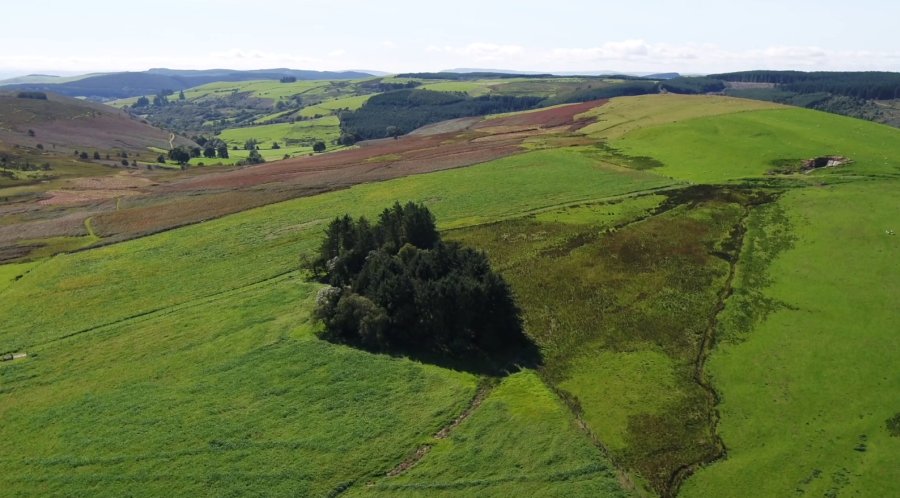
An on-farm trial in Wales has shown farmers the income and environmental benefits of a grazing alternative to brassicas.
Lamb producer James Powell, who trialled 4.7ha of Clampsaver against 4.7ha of Brassica Express, has more than doubled his income from land.
He grew a winter grazing crop of a rape, ryegrass and Berseem clover mixture compared to brassicas, and soils were not left bare over the winter.
Mr Powell had historically grown brassicas on his upland farm at Dolygarn, Powys, but was concerned about soil erosion when fields were bare in the winter.
With guidance from independent grassland and forage specialist Charlie Morgan as part of the Welsh government's Farming Connect, Mr Powell trialled an alternative.
That trial, run from spring 2020 to summer 2021, demonstrated that growing a crop of Clampsaver had allowed Mr Powell to double his income from lamb sales.
He produced 7,843kg of lamb on 4.7ha, returning £16,845 in sales, compared to 3,500kg of lamb worth £7,500 from the brassicas.
And the benefits didn’t end with lamb sales in the Clampsaver field as Mr Powell was able to graze regrowth with 200 ewe lambs - the value of that alone more than covered the £82/ha (£33/acre) difference between the seed cost of Clampsaver and Brassica Express; 88 bales of silage were also harvested.
The field was then reseeded in June at a time of the year when there is less risk of run-off.
In comparison, the field that hosted the brassicas was bare from January until reseeding in May.
During a Farming Connect Demo Farm Live event at Dolygarn, Mr Morgan said the difference between the economic performance of the two fields had been “phenomenal”.
Mr Powell is now growing 8ha of Clampsaver.
“We can graze it in the back end of the year, lamb on it in the spring and then get the value of silage from it," he said.
“Nature has never had bare soil; we are going with nature, having more roots in the ground and more biodiversity."
There are good reasons why farmers want to extend the grazing season, not least to reduce winter feed costs, but it is essential to select a system that matches farm conditions.
Growing crops such as kale, turnips and fodder beet on higher ground has an environmental impact, Mr Morgan told farmers.
“As you travel further up the hill and there is a risk of run-off and water quality is affected, it is a problem.
“If you grow stubble turnips and finish grazing in January, the land is bare until May in the uplands, and during that time, the land is not only losing soil but is costing you because it isn’t earning any money.’’
And yet, there is still a reason to grow a break crop in a grassland system, Mr Morgan added.
“We are seeing a move away from the plough on higher land and more direct drilling but that is still grass to grass and it doesn’t solve pest issues like chafer grubs and leather jackets.
“Farmers still need to grow winter crops but to do it in a more sustainable way that prevents soil erosion."
Bridie Whittle, catchment adviser with the Wye and Usk Foundation, has been working with Farming Connect on the project at Dolygarn.
She said small changes made on farms can add up and make a big difference to rivers and the environment, but also benefit a farm business, as this project had demonstrated.
“The results on the economic and production side of it are very impressive, but the rape and grass mix wins on the environmental side too," said Ms Whittle.
An assessment of the soil made in December 2020 had shown that the soil surface in the Clampsaver field was protected and had a root density that guarded against compaction, while the soil in the brassica field left bare after grazing was vulnerable to erosion and had less root density.
“I am very confident that there are some very good environmental outcomes from this project," said Ms Whittle.
The worm count alone in the soil hosting the Clampsaver was 50% higher than in the brassica field.
A golden rule to reducing risks from winter grazed brassicas is to keep roots and shoots in the ground to protect the soil, Ms Whittle advised.
